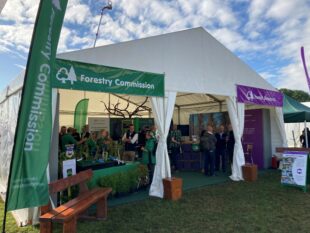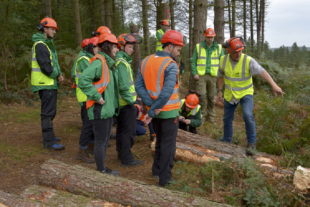 Annabel Stones, Engagement Manager at Woodland Heritage, explains how the charity is striving to build a thriving UK wood culture by championing the good use of home-grown timber from sustainable, productive woodlands.
Annabel Stones, Engagement Manager at Woodland Heritage, explains how the charity is striving to build a thriving UK wood culture by championing the good use of home-grown timber from sustainable, productive woodlands.
What is wood culture?
Wood culture is a connection between people and woodlands. It draws on our ancient understanding of trees and timber, building on skills of the past to create future resource and resilience. Though the concept of wood culture has become removed from many people’s lives today, it is practical, sustainable and rewarding, holding real value.
Woodland Heritage’s aim is to grow networks of wood growers, millers and makers. We want to see more products made from this valuable resource, so that less is wasted and more goes back into the growing cycle. To revive wood culture, it is essential that we create awareness outside of the wood industry.
Increasing awareness of the beautiful spaces, places and objects that are created by growing and using wood, will bring understanding of the importance of wood culture to more people.
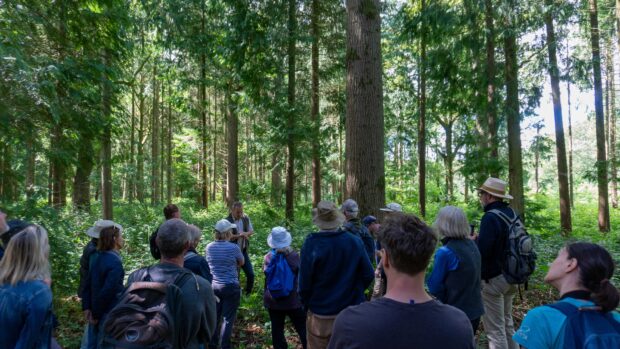
Demonstrating wood culture
We have two demonstration sites: James Wood in Somerset and Whitney Sawmills in Herefordshire. These sites provide an opportunity to show wood culture in action, alongside talking about the benefits and challenges of woodland management.
A new initiative, Open Woods & Workshops, will further open up wood culture by creating a platform for wood users and growers to share their passion and knowledge together.
James Wood: a new woodland demonstrating wood culture
James Wood is being created following a bequest from James Stratton, who envisioned the new woodland would benefit future timber supply and be a resource for research, education, climate resilience and wood culture.

This year, 23,135 trees have been planted at James Wood across 23.6 hectares. The planting includes species most prized by UK woodworkers, joiners, carpenters and furniture makers.
There are four different varieties of oak, walnut, sorbus, cedar, native Scots pine, Douglas fir, yew, chestnut, sycamore and disease resistant elm. These well-known species have been interlaced with other specialty varieties for diversity and resilience: Atlas cedar, tulipwood, cork oak, wild service tree, black poplar and white poplar.
The planting is arranged in small blocks to demonstrate different forestry approaches, including mixed blocks and single species. Alongside traditional planting of young saplings, there is also a direct seeding trial of acorns.
The site already has 10 hectares of mature and young mixed plantations. Unmanaged for many years, this area demonstrates why thinning, grey squirrel management and formative and high pruning are needed to grow high quality timber. The management plan includes work to make the most of the timber, habitat and amenity already in place.

The overarching aim is to demonstrate how wood culture benefits the environment, by using a woodland management system that increases biodiversity and plans for future resilience. The plans also benefit the economy by growing high quality sustainable timber for future resource, and benefits people by drawing on local expertise, supporting rural employment and skills, and creating a resource for education and wellbeing.
Whitney Sawmills: at the heart of wood culture
Wood culture cannot exist with just planting trees and producing wood products – there is a whole industry between the two, of which the sawmill is an integral part. Whitney Sawmills was founded by cabinet maker Will Bullough in 1990, when the quality of timber available motivated him to mill and dry his own wood materials.
The sawmill was once one of several in the area, but this keystone business is now one of the few remaining, predominantly hardwood sawmills in the UK. To this day, the sawmill enables Woodland Heritage to create a greater understanding of the importance and challenges of processing wood in the UK.
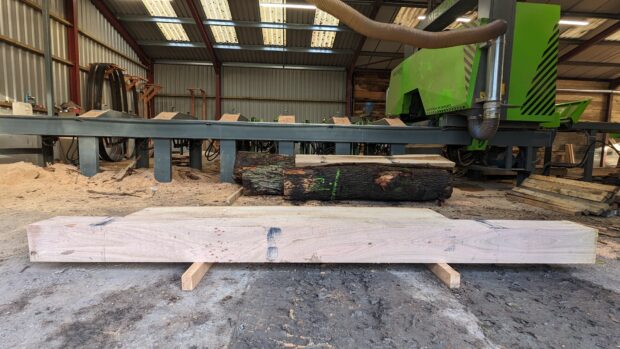
At Whitney Sawmills every part of a tree is used. Take a round stem of oak: it can be milled into planks for fine furniture and it can also be cut into beams for building. However, beams are almost always cut from the centre of the log, to balance the tensions in the wood created by its growing conditions. Then you need to find a customer and a good use for all the pieces you mill from the sides of the log – known as falling boards. Creating the best yield from each log, to make the best economic and environmental sense, is the real art at the heart of wood culture.
Falling boards become products such as flooring, skirting, architrave and cladding. Anything that cannot become product becomes ‘slab packs’ or firewood, even sawdust goes to a local farm. There are exciting developments underway to make better use of the ‘waste’ products produced in the sawmilling process.
Whitney Sawmills isn’t just a supplier; it is also a customer, buying timber from local landowners, encouraging them to manage their woodlands well. Today, most of the stock is UK grown wood and is Grown In Britain certified. This rigorous certification means that the buyer knows they are investing in high quality timber as well as the future of home-grown timber. Prioritising provenance is not a priority for all buyers but, where desire and availability align, projects and woodlands can flourish together.
Looking beyond sawmilling
The founder of Whitney Sawmills, Will Bullough, embedded an ethos that the sawmill should benefit native woodland wildlife wherever possible through responsible woodland management.
Will’s woodland, Whitney Wood, stands tall behind the sawmill and demonstrates the importance of habitat creation, species diversity, increasing the amount of deadwood and the variation in the height and age of the canopy.
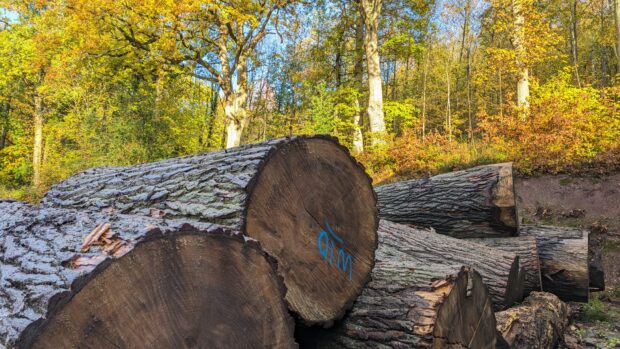
Whitney Sawmills helps to keep rural employment and skills alive. Will passed his skills and knowledge to a new sawmill manager, former cabinet maker Dermot Doyne. Today Dermot trains all the staff at the sawmill and teaches on the Woodland to Workshop course. The sawmill also hosts educational days and tours for furniture schools, public sector workers and forestry course students.
This approach demonstrates a productive woodland’s ability to benefit the environment and to build wood culture in one place.
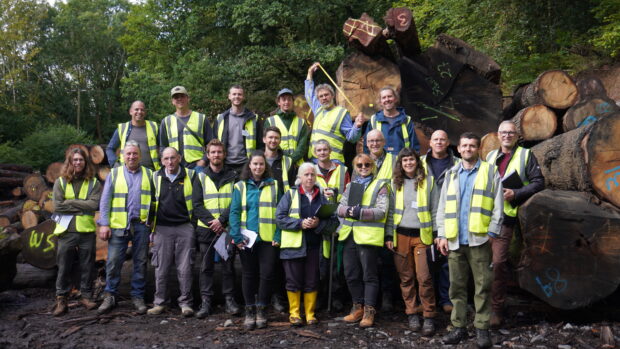
A catalyst for wood culture
At a recent Woodland Heritage event, a wooden bench made from British oak was on display. We saw how just about everyone who came in ran their hand along the bench, feeling the texture of the grain. Being close to wood may be a small step in reconnecting with wood culture, but sometimes, all we need is a starting point – a catalyst to start the conversation.

Open Woods & Workshops is that starting point. This series of events are where conversations can begin, questions can be asked, answers given and debated. A time to share knowledge and to give advice. This is where wood culture can reach beyond the timber industry.
This initiative provides people with an opportunity to be an active part of wood culture, so that those who live and love it can share their passion and reveal the benefits of building wood culture. Visitors will be able to see, and feel, the benefits of woodland management: fine timber, resource management, biodiversity and wellbeing. They will also learn more about the challenges brought by pests and diseases. We hope too, that it will rejuvenate interest and support for wood culture.
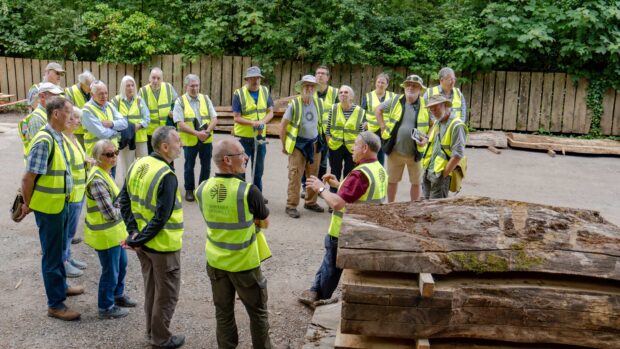
John Makepeace, OBE – one of Britain's most influential designer-makers, says:
Can you imagine life without trees in our landscape? Trees stand as beacons of our commitment to future generations. Woodland Heritage advances the planting and management of trees, vital to nature, our wellbeing, and as a sustainable source of the world’s most beautiful materials. Initiatives like Open Woods & Workshops are so important to promote British grown wood as a resource for current and future generations of craftspeople.
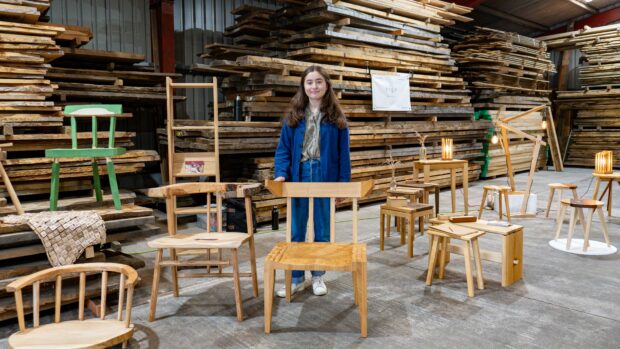
Future wood culture
We are looking to a future where wood culture thrives with well-managed woodlands that benefit the environment and produce high-quality timber, and people better understand the sound of a chainsaw.
Open Woods & Workshops takes place throughout June 2025. Whitney Sawmills is open to visitors on 6 June for sawmill tours, makers and trade stands. James Wood is open to visitors on 20-21 June and 27-28 June.
